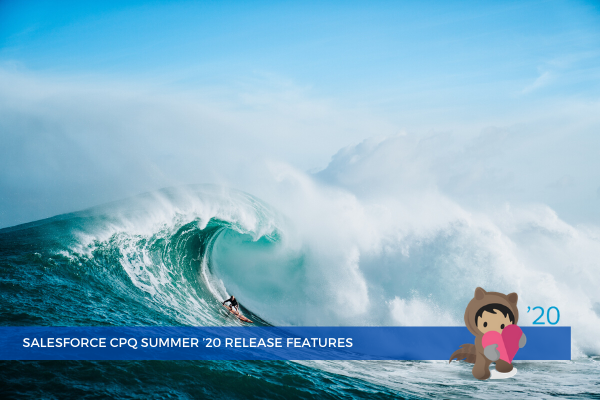
19
JunCPQ is one of our favorite Salesforce products because it's so powerful and just an invaluable asset for any company that has to generate quotes for their orders. The quotes generated by this software are automated based on a preprogrammed set of rules which ensures error-free pricing.
Salesforce Summer '20 Release comes with four upgrades to CPQ. Let's take a look at them and see how these features add even more value to this wonderful product.
Optimize Column Sizes On Quote Line Editor
Now sales reps have the possibility to optimize column sizes on the Quote Line Editor layout to meet their needs. Column widths can be resized in order to see what's really important and reduce horizontal scrolling and shrink the white space. What is more, the Quote Line Editor now has an auto-saving functionality, which is a life-saver, especially if the internet connection is not very stable. It's also possible to reset the Quote Line Editor to the default without having to remove or re-add anything. Also, Quote Line Editor has a minimum column width, which will guarantee that columns are not lost from sight.
How: On a desktop, select Enable Column Resizing in the Line Editor settings. Don't forget to make sure that each user profile has the correct permissions for the column metadata and field metadata objects.
Automatic Usage Summaries for Evergreen Usage-Based Subscriptions
Evergreen subscriptions became available in Winter '19, giving the ability to quote, sell, and manage subscription products without an end date, that is, without having to renew them. That's why they are called evergreen like the plants.
With the Summer '20 Release, users can upload usage to an evergreen subscription order product at any point, and everything will be calculated correctly from there. Previously this would result in Salesforce CPQ creating an order product with 12 usage summaries. Now, if the usage processing date doesn't fall within one of the order product's active, uninvoiced usage summaries, Salesforce Billing creates a usage summary and assigns it the new usage.
How: The new usage summary follows the same billing periods as the order product's previous usage summaries. For example, let's say the 12 usage summaries had a one-month term, they began on the first of the month and ran from 02/01/20 through 01/31/21. When the sales rep uploads usage with a usage date of 04/25/21, Salesforce Billing generates a usage summary for 04/01/21 through 04/30/21.
Choose When to Bypass the Preserve Bundle Structure Requirement on Amendments
Sales reps now have greater bundle structure control when creating amendments. Previously, they would have to use the original contract's product bundle structure. Now, sales reps can keep the original structure or make use of the new Bypass Preserve Bundle Structure functionality, which removes this requirement, and the bundle products become individual quote lines on the amendment quote. Note that although it offers a lot of flexibility, it still should be used with care.
How: In Salesforce CPQ Subscriptions and Renewals settings, select Bypass Preserve Bundle Structure.
Transition CPQ to Permission Set Licenses (Update)
The new CPQ update is replacing Managed Package Licenses with Permission Set Licenses. This means that you have to first assign the new license to all users before installing or upgrading to the Winter '21 version.
How: A tool was added in the CPQ package settings in Spring '20 designed to check the readiness of the org for the license change. If the users have a CPQ permission but no license, they won't have access to CPQ in Winter '20 or the Winter '21 upgrade will fail, and the org will remain on the Summer '20 version.
We are excited to see that Salesforce CPQ is continuing to grow and develop, and that feedback is being taken into consideration. With these new Summer '20 sales reps have even more flexibility and confidence using this tool offered by Salesforce.
Comments (0)